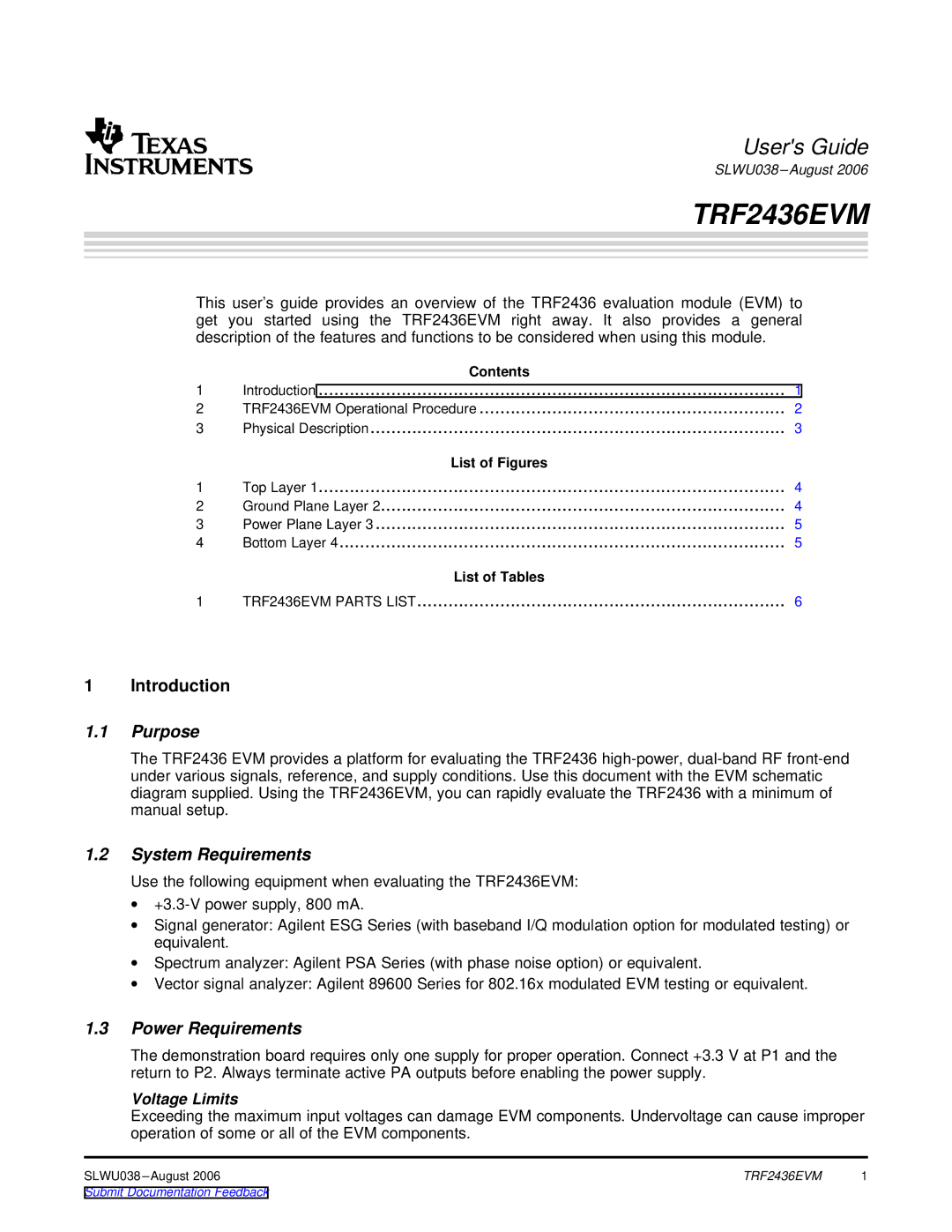
User's Guide
SLWU038 – August 2006
TRF2436EVM
This user’s guide provides an overview of the TRF2436 evaluation module (EVM) to get you started using the TRF2436EVM right away. It also provides a general description of the features and functions to be considered when using this module.
| Contents |
|
1 | Introduction | 1 |
2 | TRF2436EVM Operational Procedure | 2 |
3 | Physical Description | 3 |
| List of Figures |
|
1 | Top Layer 1 | 4 |
2 | Ground Plane Layer 2 | 4 |
3 | Power Plane Layer 3 | 5 |
4 | Bottom Layer 4 | 5 |
| List of Tables |
|
1 | TRF2436EVM PARTS LIST | 6 |
1 Introduction
1.1Purpose
The TRF2436 EVM provides a platform for evaluating the TRF2436
1.2System Requirements
Use the following equipment when evaluating the TRF2436EVM:
∙
∙Signal generator: Agilent ESG Series (with baseband I/Q modulation option for modulated testing) or equivalent.
∙Spectrum analyzer: Agilent PSA Series (with phase noise option) or equivalent.
∙Vector signal analyzer: Agilent 89600 Series for 802.16x modulated EVM testing or equivalent.
1.3Power Requirements
The demonstration board requires only one supply for proper operation. Connect +3.3 V at P1 and the return to P2. Always terminate active PA outputs before enabling the power supply.
Voltage Limits
Exceeding the maximum input voltages can damage EVM components. Undervoltage can cause improper operation of some or all of the EVM components.
SLWU038 | TRF2436EVM | 1 |
Submit Documentation Feedback
